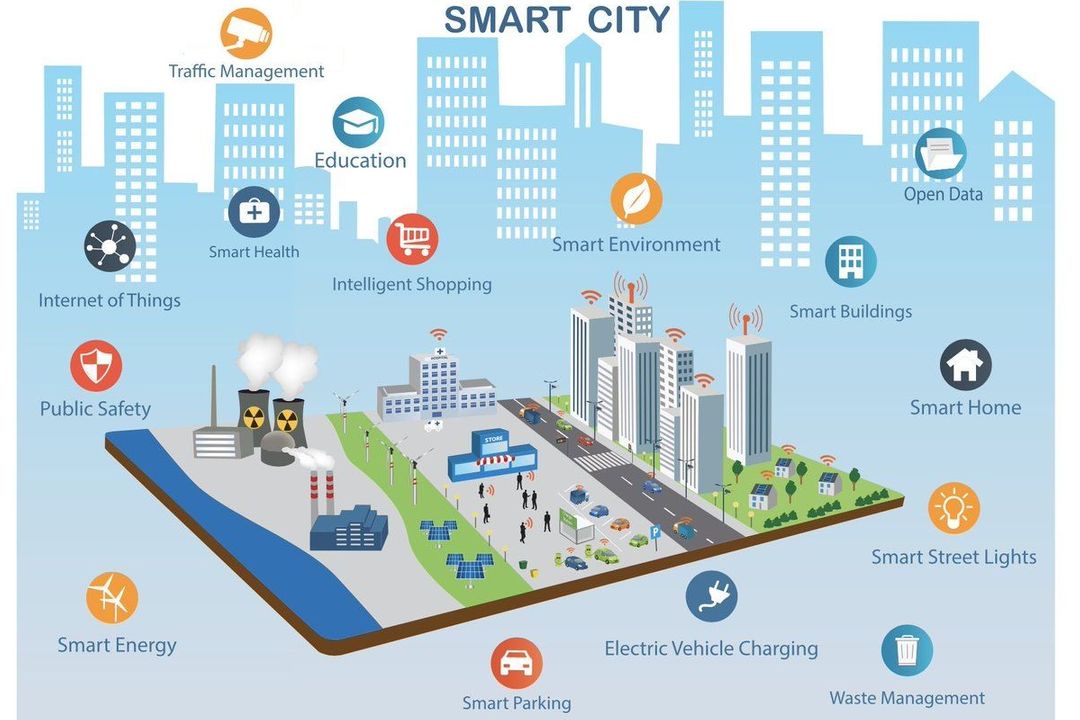Humans for long have lived in a tightly-packed places with almost dried up facilities and amenities. There is a set of so-called modern city in every country only accessible to a certain percentage of the population due to high living cost. Even with all the advancement and high infrastructure, the troubles remain constant for an average citizen. As quoted by many, “an intelligent human knows how to mix hard and smart work together“. The term Smart City is coined henceforth to bring smartness to all the facility required in a particular area. From smart and ease governance to better healthcare and most important to improve connectivity and security.
A smart city is an urban municipality that uses various Internet of Things sensors (IOT) to collect data to build up its own secure database and then through analysis gained helps in improvement of operations across the city.
The Technology Behind!
A city meant to be alive all the time to cater the needs of its citizen must need smart technology. Isn’t it? With the combination of Internet of things (IOT) devices, software solutions, communication networks and easy User interfaces (UI), this dream shall come true.
1. IOT
The essential sensor interfacing across the city comes under Internet of things (IOT). It consists of high-quality sensors and devices required for sensing all the parameters and collecting the data that enables the technology to be more productive. Examples can include, smart water meters for detecting water percentages, infrared enables street lighting systems, smart bins for better maintenance of garbage and waste disposal .
2. Big data
With IOT producing huge data sets, hence comes the requirement of analysing and processing to implement smart city services. big data under Information of Communication technology (ICT) does the job. Various big-shot companies like google, prolifics and oracle can provide with database management systems.
3. Connectivity
The latest in the communication sector is the 5G enrolment which provides access to faster speed and higher bandwidths with low network lags. A primary need for the future smart cities to cooperate and coordinate with each other. The sensors across the infrastructure can give faster results and act accordingly. Many cities like London, China, America and latest India are targeting to install 5G towers to improve their network capacity.
4. Satellite technology
With Elon Musk’s starlink satellite grid, smart networking system is not very far where nobody has to look for big towers for getting network to the phones. More high precision satellites in the future is required for Global positioning system to locate even an EV charging station or even a person in case he goes missing. With better tracking and management of traffic on roads, accident are to reduce by atleast 75% in the near future.
How a smart city works
The primary work is a 4 step process:
- 1. Collection of data through various sensors gathered in real-time
- Processing and analysing the data
- Making decisions on data gathered and current environmental and human factors
- Acting on the decision made
Current progress
The top 10 list of fully functional smart cities as of 2020 are:
- New York with 8.5 million population looks for better water management and smart waste disposal systems through smart city plan.
- London also the second-best smart city by IESE.
- Paris for smart transportation and mobility and amidst the development of grand Paris express featuring 127 miles of fully automated metro lines
- Tokyo
- Reykjavik
- Singapore
- Seoul
- Toronto
- Hong kong
- Amsterdam
Welcome to the future
With smart city being very effective and promising for the greener and safer urban living, how about we take our imagination one notch above the current requirement -the floating cities. Sounds scary!
But let me tell you, humans have a long history of living on the water. Many southeast Asian villages have floating homes built on water. The United Nations has also expressed their views and supported the need for floating cities as our cities continue to grapple with high density of population and water level rising making coastal areas a tough land to live on.’ And this could be a start to something bigger as water takes up 70 % of earth’s mass.
Now let’s rise above the land and water and think about cities floating at 30000 ft above sea level. A city floating in air.

